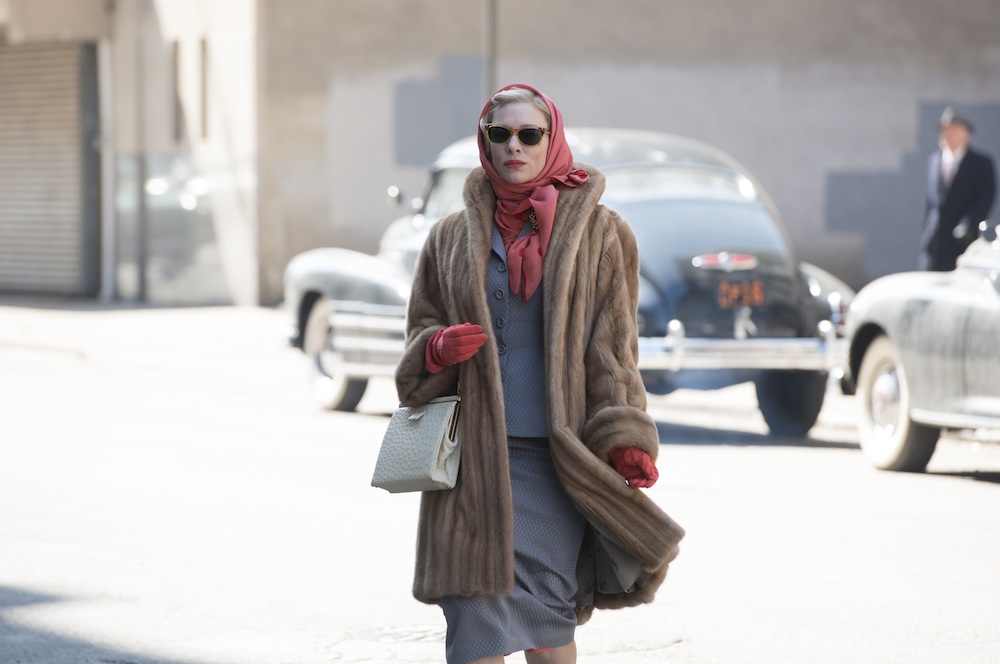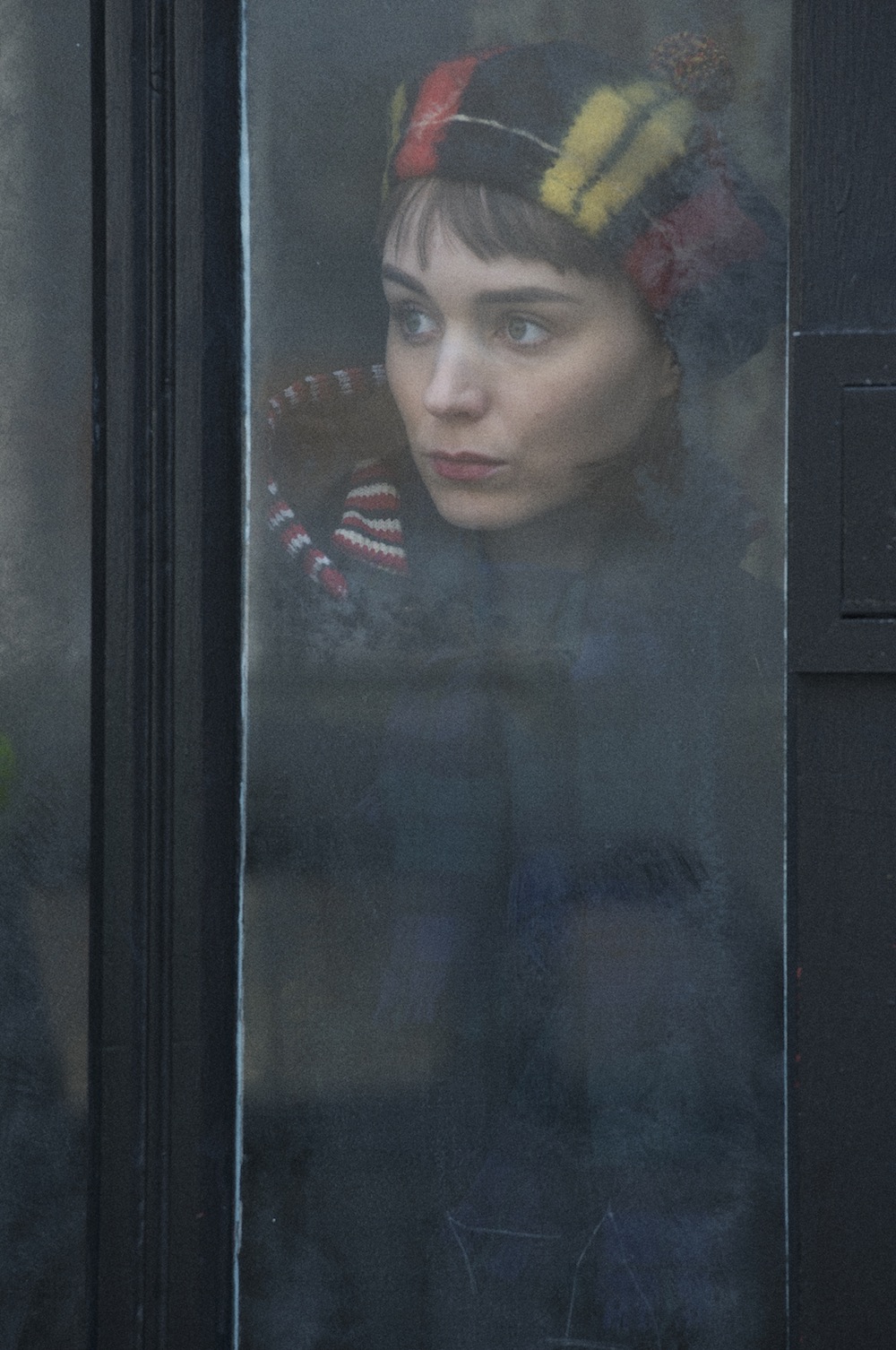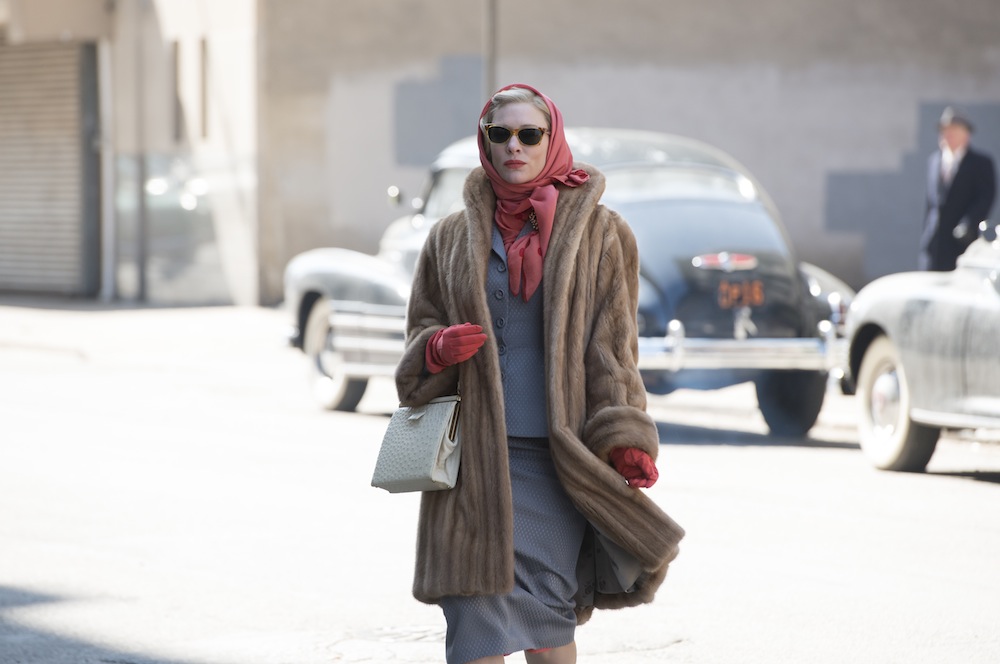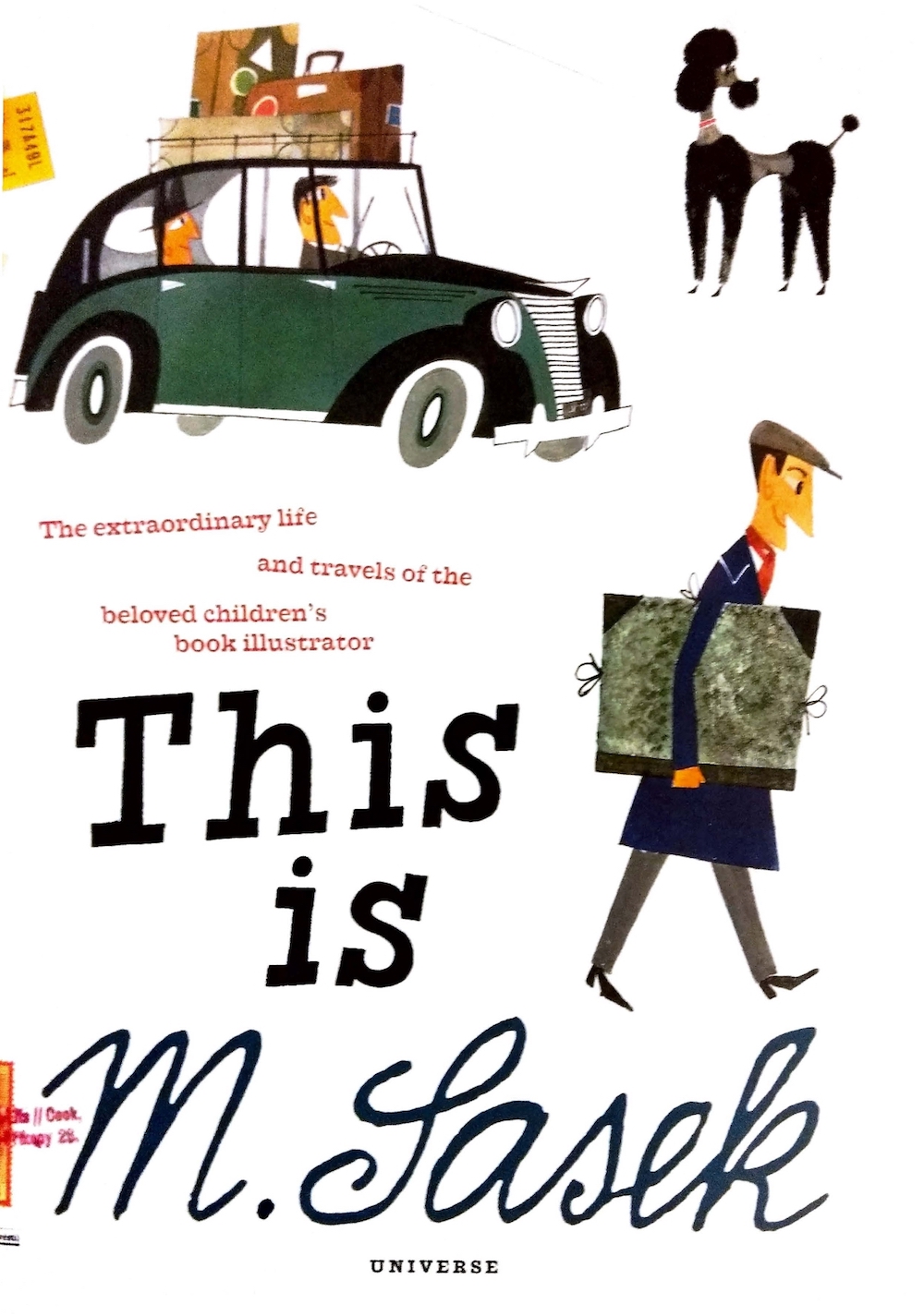
Object of desire: Cate Blanchett as Carol (photo: StudioCanal)
If 2015 turns out to be the year I fell out of love with cinema I’m going to blame Todd Haynes. He’s been one of my favourite directors since he made the sublime Far From Heaven with Julianne Moore, more than a decade ago. In 2011 he had Kate Winslet and Guy Pearce steaming up the small screen in his erotically charged remake of the old Joan Crawford vehicle Mildred Pierce. But despite the presence of the luminous Cate Blanchett, I’m afraid Haynes’s latest period drama – an adaptation of Patricia Highsmith’s novel Carol – feels devoid of passion.
It’s Christmas season in New York in the early 50s, and Therese Belivet (played by Rooney Mara) is working in the toys section of Frankenberg’s department store. She spends her free time taking arty black and white photos and fending off her over-eager boyfriend Richard (Jake Lacy), who wants to whisk her off to Europe. During one of their tiffs we learn that Therese and Richard are not lovers. The reason behind their obvious lack of sexual chemistry soon becomes clear, when Therese falls hopelessly under the spell of a customer who (conveniently) leaves her gloves behind in the store.
This stranger is the alluring blonde Carol Aird (played by Blanchett), who lives in New Jersey with her impossibly cute daughter Rindy. Carol’s affluent lifestyle is complicated by her resentful and estranged husband Harge (played by Kyle Chandler) and the lingering presence of her former lover Abby (Sarah Paulson), who remains a confidante.
Despite the yawning gap in age, experience and income, Carol gradually draws out the shy Therese, who seems awed by the sheer presence of her glamorous new friend. As their meetings move from public spaces to private ones, the romantic undertones become more pronounced – Carol places her hands proprietarily on the younger woman’s shoulders and presents her with an expensive new camera. Cruelly, real life crashes into this delicate web of unspoken feelings, forcing the pair to escape onto the open road.
I first read Highsmith’s novel, which was originally published in 1952 as The Price of Salt, back in the early 90s, so I knew how things would turn out for the star-crossed lovers. My disappointment with this adaptation isn’t due to Haynes and screenwriter Phyllis Nagy taking liberties with the plot – they have stuck pretty closely to the source material – but with the film’s shift in viewpoint. The novel’s third-person narrative presents events entirely from Therese’s point of view: Carol is the object of her romantic longings and the focus of her yearning for something more than her dull job and unwanted beau. Therese’s confusion about her contrasting feelings for Carol and Richard are clearly articulated. As readers we fall for Carol because we see her through Therese’s eyes.

Looking for love: Rooney Mara as Therese (photo: StudioCanal)
The film splits its focus between the two women, showing us scenes of Carol with her in-laws and at her lawyer’s office that are not in Highsmith’s book. Though the novel runs to fewer than 300 pages, the film-makers have had to omit much of Therese’s back story concerning her family and her day-to-day working life. Instead of hearing Therese’s thoughts and opinions, we’re presented with endless scenes in which she stares into the middle distance during (artily shot) car journeys or chats with minor characters.
Shorn of her inner life, the cinematic version of Therese comes over as boring and one-dimensional. Cate Blanchett’s Carol simply blows Rooney Mara’s pallid Therese off the screen in every scene. This makes their love affair – supposedly the focal point of the movie – seem at best tedious and at worst unwatchable. It’s not so much slow-burn as no-burn, and I defy you to watch this movie’s single sex scene, which is captured in huge, disorienting close-ups, without wanting to press fast-forward.
In Blue Jasmine her character was a sobbing, sweaty, emotional train-wreck, but here Blanchett has to keep Carol’s unhappiness and insecurity on a tight rein. It’s a beautifully modulated performance in which her big scenes have more weight because they stand in such contrast to the coolness and restraint of the rest of the film. Tellingly, Carol the movie only came alive for me in those scenes that don’t involve Therese. Carol’s displays of insecurity when confessing her fears to Abby, her anger with Harge and her courage in dealing with the humiliation of a bitter custody battle over her daughter all moved me more than the insipid romance.
No one loves to wallow in mid-century style more than I do, but Haynes and cinematographer Edward Lachman are so intent on making us swoon at the parade of sleek automobiles, smoke-filled lounges and the immaculately attired Carol herself – those perfect cheekbones and shiny red nails – that the movie feels both slow and over-long.
Though it comes garlanded with 5-star ratings and trailing Oscar hopes, I’m afraid Carol the movie failed to seduce me.












